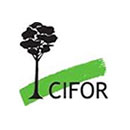Ten years ago, Guyana’s politicians faced a dire predicament. Previous mismanagement, corruption, and low international bauxite and sugar prices had left their economy in a shambles. They could not pay back their loans and their country’s infrastructure had fallen into complete disrepair. They had a poorly trained work force, weak institutions, practically no local sources of capital, and little that might attract foreign investment and expertise.
Except natural resources. In relation to its small population (750,000 inhabitants), Guyana is quite rich in timber and gold deposits. Tropical forests cover most of its 215,000 square kilometers.
To try to get out of their mess, the politicians sought help from the IMF and the World Bank. In 1988, the government initiated a Structural Adjustment Program (SAP) that included a currency devaluation, privatization of state-owned companies, cut backs in government spending, trade liberalization, and policies designed to attract foreign investment. Since policy makers identified mining and logging as sectors where Guyana could rapidly improve its exports, they made a special effort to promote those activities. Within a few years, large foreign logging companies had concessions covering a third of the entire country and over thirty foreign mining companies were operating there.
The SAP policies helped stabilize Guyana’s economy. But the mines contaminated the water and the loggers degraded the forests. The companies further marginalized the country’s desperately poor Amerindian population. The government has virtually no capacity to regulate the new extractive activities and foreign agencies only took the first steps to help create such a capacity in the last couple of years. It remains uncertain whether Guyana’s macroeconomic achievements can be sustained over time. Foreign investors may deplete the country’s timber and gold and then move on, leaving little behind for the local population or the nation’s development.
That’s the worrisome story Marcus Colchester of the Forest Peoples Programme tells in his paper ’Social Exclusion and Development Domination, The Underlying Causes of Deforestation and Forest Degradation in Guyana’.
We want you to share Forests News content, which is licensed under Creative Commons Attribution-NonCommercial-ShareAlike 4.0 International (CC BY-NC-SA 4.0). This means you are free to redistribute our material for non-commercial purposes. All we ask is that you give Forests News appropriate credit and link to the original Forests News content, indicate if changes were made, and distribute your contributions under the same Creative Commons license. You must notify Forests News if you repost, reprint or reuse our materials by contacting forestsnews@cifor-icraf.org.
Further reading
If you would like an electronic copy of the paper, you can request it by writing to Marcus Colchester at info@fppwrm.gn.apc.org. Marcus Colchester also welcomes your comments, which you can send to the same address.




